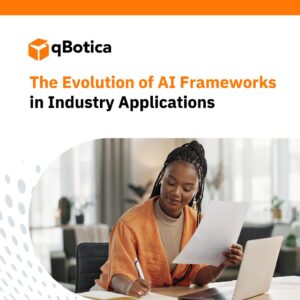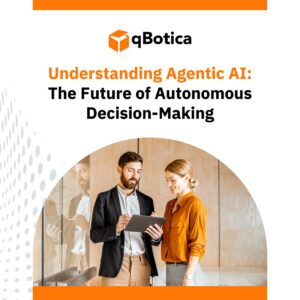This week, beat the Monday blues and let RPA take over. Robotic Process Automation or RPA is here to handle repetitive tasks and free humans. Does this mean no more work for us? No, we’re not there yet. You’ll still work but do the more productive and detail-oriented work. And no, it also won’t get you your coffee.
Robotic Process Automation. Sounds futuristic and sophisticated, doesn’t it? Sounds like something from the future is communicating to us. But it is not. RPA is a fairly new but well-developed automation process that is already making waves in the lives of daily workers.
RPA or Robotic Process Automation is a technology that is changing the way people do repetitive tasks. There are many daily tasks in the work pipeline that require repetition and work that is purely based on muscle memory. This is where RPA steps in and takes over elegantly. RPA takes over rule-based business processes. Wherever there is a logical and structure-based approach to the process, bots can learn and take over those tasks, freeing up the humans to do the more creative, intelligent work.
For example, tasks like logging into applications, moving files, managing data by extracting and copying relevant information, and filling forms are some of the basic chores it can take over. RPA can also take over advanced tasks like engaging in chats and conversations with other software systems, decoding unstructured data, working in tandem with AI systems and applying machine learning (ML) to make complex decisions.
That is a lot of information seriously, don’t we have easier examples? Just like Albert (Einstein) said, if we can’t explain a complex concept in a simple way, maybe we don’t understand it either.
If you had to explain RPA to a child, this is what it does. It frees up time by performing the time consuming, laborious task behind the desk so that Mom and Dad can be home on time for dinner.
Seriously, it’s that simple.
Let’s take the ever-important healthcare and insurance field. RPA can be deployed to input and process claims. This is not only done way faster than humans but also with the least number of errors. Imagine thousands of claims every day that need to be filed, processed and studied. That is a lot of human hours invested in something that RPA can perform much faster and even come up with exceptions, if any. This saves a lot of time and effort, leaving humans to do more important tasks.
Now that the RPA can take over these high-volume tasks, it also frees up their human counterparts to do the work that matters. Work that has higher value in terms of being there for the customers. Collaborating and building teams. Helping to create better products and innovate. This takes humans away from their repetitive robotic tasks and lets the robots do theirs. Freeing up time and mental space to take on exciting, challenging and fulfilling work.
Now that we know what RPA is, let’s understand some more basics. It is easy to deploy RPA into existing enterprise systems. RPA integrates itself into software systems and is ready to work for your business needs. And the three-letter word that everybody loves! ROI or Return On Investment: Not only will RPA give you a relatively quick ROI, it will also improve and make your work more efficient by machine learning, improving your ROI over time. It learns your processes, becomes better and is ever ready to scale. As your business grows, these powerful software robots are ever ready to grow and accommodate your business needs over time.
As of today, RPA has been deployed in various industries such as Health care, HR, Insurance, Sales, Finance and Banking. It is here to help and support humans. It learns from us so that it can help us be more efficient, precise, and most importantly happy. Studies have shown that RPA has also improved employee engagement. Which means, happier employees and better overall results. A true WIN, WIN, WIN for your business.











